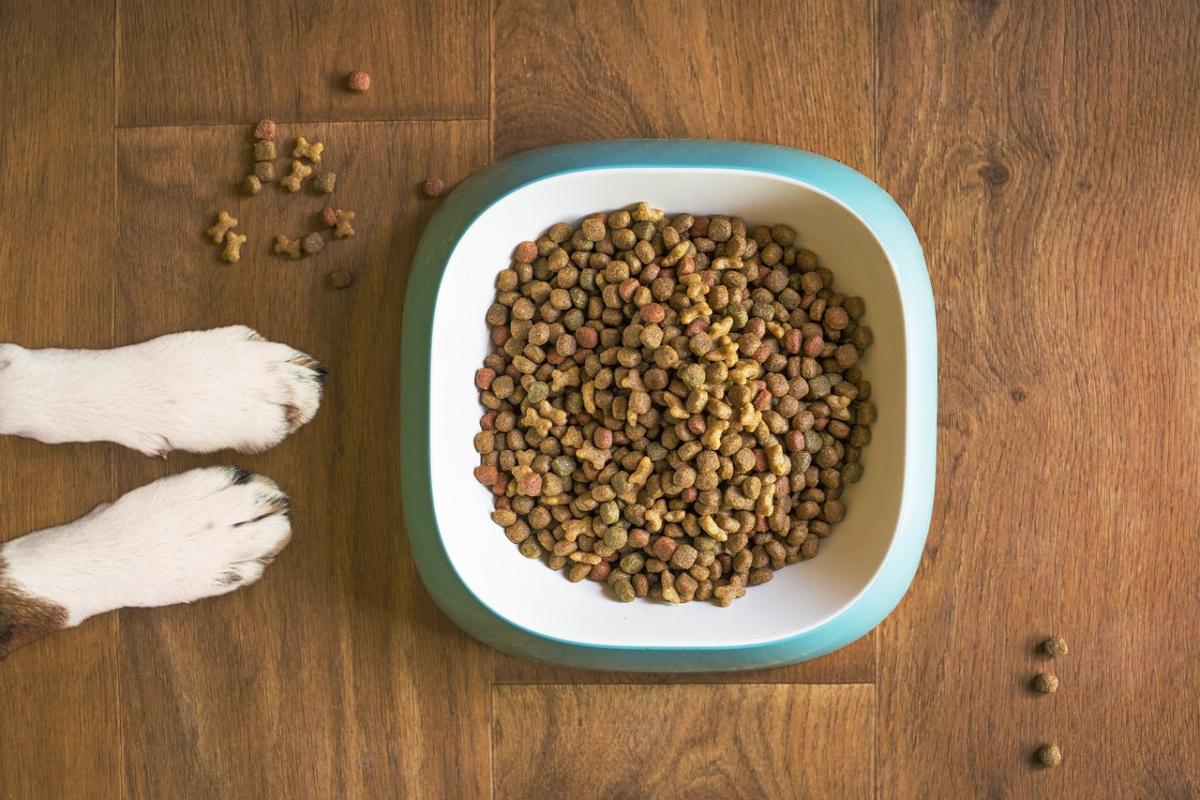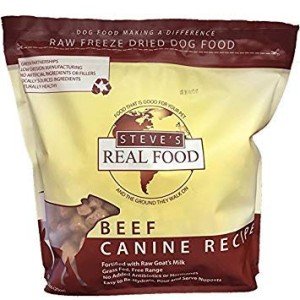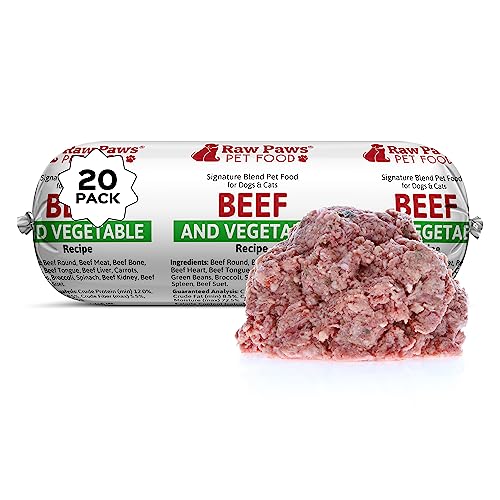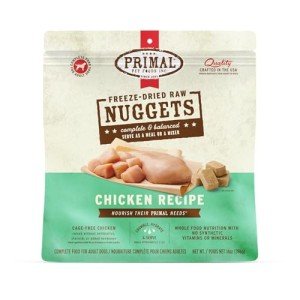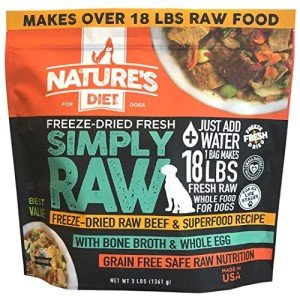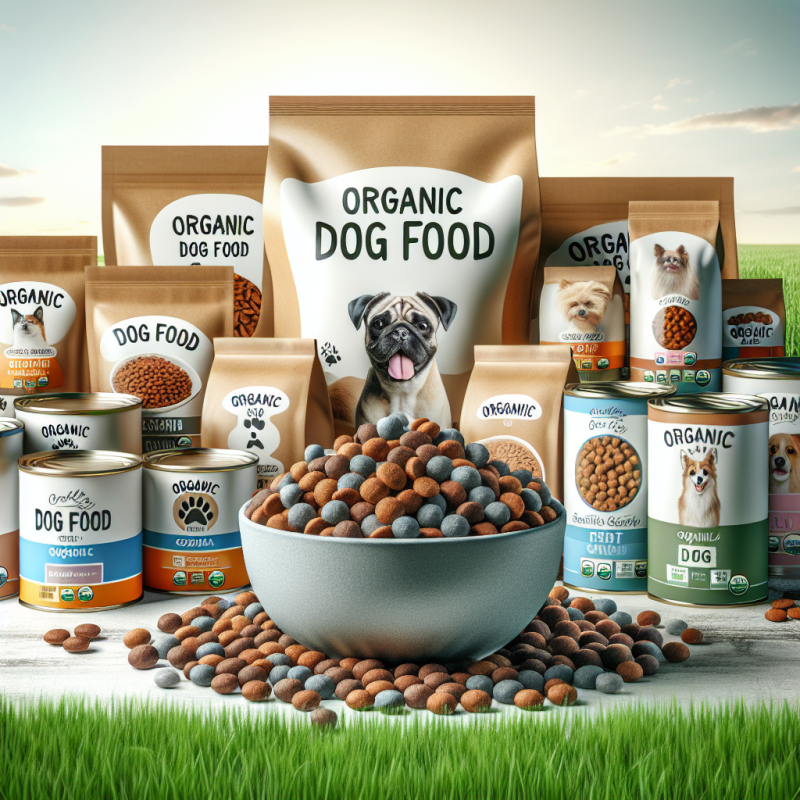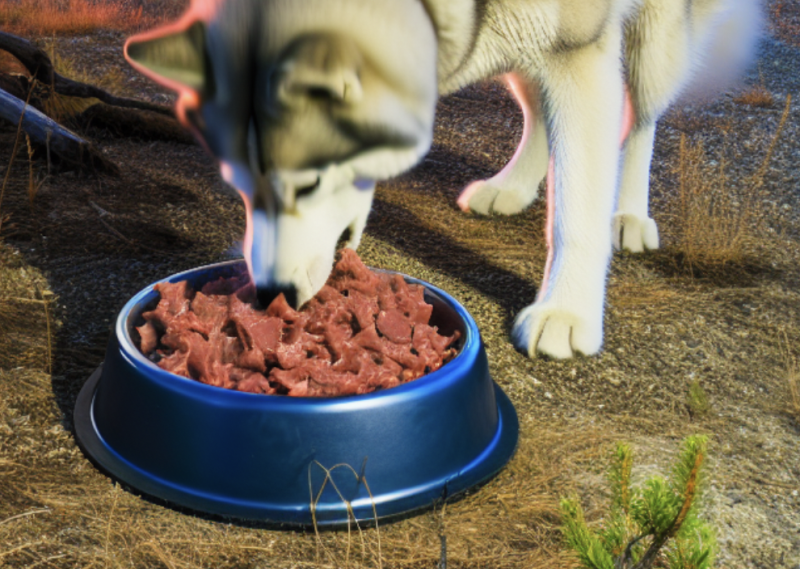Your Ultimate Guide to Dog Food, Raw Dog Food, and Natural Dog Nutrition
As a devoted dog parent, you want to see your dog-child thrive – brimming with energy, sporting a gleaming coat, and radiating pure joy. While belly rubs and playful romps certainly do the trick, the true foundation of your dog's vitality lies in what's in their bowl. The choices you make about dog food directly impact every facet of their well-being, from their digestive health to their mood and longevity.
Navigating the vast and often confusing world of canine cuisine can feel overwhelming. With buzzwords like raw dog food and natural dog food dominating discussions, how do you determine the best dog food for your dog's unique needs? This comprehensive guide will simplify dog nutrition, explore various feeding philosophies and provide you with the knowledge to make informed decisions towards your dog's optimal health.
Dog Food and Overall Dog Health are Intimately Linked
It might seem obvious, but the quality and appropriateness of your dog's diet are inextricably linked to their overall health. Just as a balanced, nutrient-dense diet is fundamental for human well-being, it's even more critical for our canine companions, whose nutritional desires are not something they can express to us easily.
Why Proper Dog Nutrition Matters So Much:
- Foundation for All Bodily Functions: Every cell, tissue, and organ in your dog's body relies on a steady supply of essential nutrients from their dog food. This includes proteins for muscle growth and repair, fats for energy and cellular health, carbohydrates for sustained vitality, and a complex array of vitamins and minerals for countless metabolic processes.
- Strong Immune System: A well-nourished dog has a robust immune system, capable of fending off illnesses, infections, and environmental stressors more effectively. Conversely, nutritional deficiencies can weaken immunity, leaving your pup vulnerable.
- Healthy Digestion and Gut Microbiome: The right dog food promotes a healthy gut microbiome – the community of beneficial bacteria essential for nutrient absorption, waste elimination, and even immune regulation. Poor quality food can lead to digestive upset, allergies, and chronic inflammation. The gut microbiome in dogs (and humans!) is a central component of overall good health.
- Shiny Coat and Healthy Skin: A dull coat, flaky skin, or excessive shedding are often early indicators of nutritional deficiencies. A diet rich in essential fatty acids and quality proteins, found in the best dog foods, contributes directly to a lustrous coat and supple skin, acting as a protective barrier.
- Optimal Energy Levels and Mood: Just like humans, dogs need consistent energy. Whether for play, training, or daily activities, adequate energy is part of an active and happy life for dogs. Proper dog nutrition provides this stable energy with properly balanced proteins, carbohydrates, and fats. Furthermore, certain nutrients (amino acids and vitamins/minerals) play a role in neurotransmitter production, influencing mood, behavior, and cognitive function.
- Healthy Weight Management: Obesity is a growing concern in dogs, leading to a myriad of health problems like diabetes, joint issues, and heart disease. The right dog food helps maintain a healthy weight, preventing these cascading health issues.
- Longevity and Quality of Life: Ultimately, providing optimal dog nutrition can contribute to a longer, healthier, and more vibrant life for your cherished companion. It helps manage age-related decline and keeps them feeling their best for years to come.
Feeding your dog a high-quality diet can help prevent a myriad of common health issues, from minor irritations like itchy skin and digestive upset to more serious chronic conditions. On the flip side, a diet lacking in vital nutrients, or one filled with artificial additives and fillers, can leave your dog feeling sluggish, susceptible to illness, and generally not at their peak.
Deciphering Dog Nutrition: What Exactly Does Your Dog Need?
Understanding dog nutrition involves grasping the core macronutrients and micronutrients that constitute a complete and balanced diet. Dogs are facultative carnivores, meaning that while meat forms the cornerstone of their diet, they can process and benefit from certain plant-based foods as well.
The Pillars of Canine Nutrition:
-
Protein: The Building Blocks of Life
- Why it's crucial: Protein is fundamental for muscle development, repair, and maintenance. It's also vital for creating enzymes, hormones, antibodies (for immunity), and for healthy skin, hair, and nails. Growing puppies, active dogs, and lactating females have higher protein requirements.
- Sources: High-quality animal proteins are most digestible and biologically available for dogs. Look for specific meat sources as the first ingredients: chicken, beef, lamb, turkey, fish (salmon, cod), duck, or novel proteins like venison or rabbit. Meat meal (e.g., chicken meal) can also be a concentrated source of protein, but "by-product meal" is lower quality (No products on this website will have by-products of any kind.)
- What to avoid: Generic "meat meal" or excessive plant-based proteins as the primary protein source, which can be harder for dogs to fully utilize. Some of the grain-free products can be too heavy on legumes (beans) and that can upset some dogs' systems too. While small amounts of legumes are okay for some breeds, avoid them unless your veterinarian has given you the okay.
-
Fats: Essential Energy and Nutrient Absorption
- Why it's crucial: Fats are a concentrated source of energy, provide structure to every cell, and are necessary for the absorption of fat-soluble vitamins (A, D, E, K). Specific fatty acids, like Omega-3s and Omega-6s, are vital for skin and coat health, brain development (especially in puppies), vision, and maintaining a balance of inflammation (Contrary to the idea that inflammation is always "bad," it is also necessary to heal any wound or infection.)
- Sources: High-quality animal fats like chicken fat, beef fat, or fish oil (salmon oil, cod liver oil) are gotten from high quality animals. In other words, the source of the meat - how it lived and what it ate- will determine the quality and content of its fat. Due to the sorry state of animal husbandry in the USA (if you've ever driven by a bovine feed lot, you can see they are crowded and tromping around on their own cow-patties), meats that are merely USDA stamped are just not good enough. All of the animal-based foods on this website go above and beyond to source high-quality animal meats for their products, and this means better fat quality.
- Plant-based sources like flaxseed oil or sunflower oil can provide some beneficial fats but are slightly different in structure from the animal sourced omega-3 fatty acids. Since dogs must have meat for good health, deriving their fats from meat just makes more sense. That said, the plant oils can be used to bring balance to some dog food formulas.
- What to avoid: Generic "animal fat" without specific sourcing, or excessive amounts of low-quality, highly processed fats. Avoid anything that says "hydrogenated" fat of any kind. This type of fat does not occur in nature at all.
-
Carbohydrates: Fuel and Fiber
- Why it's crucial: While not strictly essential for survival (dogs can produce glucose from protein and fat), digestible carbohydrates provide readily available energy and dietary fiber. Fiber promotes healthy digestion, regulates blood sugar, and supports a healthy gut microbiome.
- Sources: Wholesome, complex carbohydrates are best: sweet potatoes, brown rice, barley, oats, quinoa, and certain vegetables.
- What to avoid: Excessive amounts of simple carbohydrates like corn, wheat, or soy- these are primarily fillers, often indicating the dog food is heavily processed and lacks nutritional density. These can sometimes trigger allergies or sensitivities in susceptible dogs too. [as an aside, urban legend has it that a dog food manufacturer in the Midwest noticed dogs eating cereal grain in an alley... the light bulb of entrepreneurship went off, and they began producing dog food made from spent grain with a spray of meat juices on it. This gave rise to the first kibble. Lore? Maybe.]
-
Vitamins and Minerals: The Micronutrients Your Dog Must Have
- Why it's crucial: These tiny but mighty nutrients are involved in virtually every bodily function, from bone formation and nerve function to immune response and metabolism. A complete and balanced dog food will have a carefully calibrated blend, and sources on this site will add fewer because the food itself is already high in nutrients.
- Examples:
- Vitamins: Vitamin A (vision, skin), B vitamins (energy metabolism), Vitamin D (bone health), Vitamin E (healthy skin and coat), Vitamin K (blood clotting).
- Minerals: Calcium and Phosphorus (bone health, must be in proper ratio for dogs!), Zinc (immune function, skin), Selenium (antioxidant), Iron (oxygen transport), Copper (collagen formation).
- What to look for: A reputable dog food will list specific vitamin and mineral supplements to ensure completeness, often in chelated forms for better absorption. You will see a longer list of added vitamins and minerals on poor quality dog foods because they are not sourcing food that contains them! So, sometimes the best dog foods have the least added nutrients on the ingredient list!
-
Water: The Most Overlooked Nutrient
- Why it's crucial: Absolutely essential for life! Water facilitates nutrient transport, regulates body temperature, lubricates joints, aids digestion, and helps flush out toxins.
- Source: Always ensure your dog has constant access to fresh, clean water.
The AAFCO Statement: Your First Line of Defense
When selecting any commercial dog food, always look for the nutritional adequacy statement from the Association of American Feed Control Officials (AAFCO). This statement, usually found on the back of the bag or can, will confirm one of two things:
- "Animal feeding tests using AAFCO procedures substantiate that [product name] provides complete and balanced nutrition for [life stage, e.g., 'all life stages', 'growth', 'maintenance']."
- "[Product name] is formulated to meet the nutritional levels established by the AAFCO Dog Food Nutrient Profiles for [life stage]."
While AAFCO sets minimum (and sometimes maximum) nutritional guidelines, it doesn't regulate quality. It's a starting point, not the sole determinant of the best dog food.
Exploring Dog Food Philosophies: From Kibble to Raw
The landscape of dog food options is vast, and choosing can feel like picking a path through a dense forest. Let's break down the most common feeding philosophies and their considerations.
1. Dry Kibble (The Most Common Choice)
Dry kibble is the most popular dog food type due to its convenience, cost-effectiveness, and shelf stability.
- Pros:
- Convenience: Easy to store, measure, and serve.
- Cost-Effective: Generally the most affordable option.
- Dental Benefits (Minor): Some kibbles are designed to help scrape plaque off teeth, though this effect is often minimal compared to professional dental care or dental chews.
- Complete & Balanced: Most commercial kibbles are formulated to meet AAFCO nutritional standards.
- Cons:
- Processing: Dry kibble undergoes extensive processing (extrusion) at high temperatures, which can degrade some nutrients, beneficial enzymes, and antioxidants.
- Lower Moisture Content: Dogs eating only kibble need to drink more water to stay adequately hydrated.
- Ingredient Quality Varies Wildly: The spectrum ranges from highly processed, filler-heavy formulas to premium, grain-free, and limited-ingredient options.
- Potential Allergens: Many traditional kibbles contain common allergens like corn, wheat, soy, or lower-quality proteins.
What to Look for in a High-Quality Kibble (Your "Best Dog Food" Dry Option):
- Named Meat Protein First: The first ingredient should be a specific animal protein (e.g., "chicken" not "meat").
- Limited Fillers: Avoid formulas where corn, wheat, or soy are among the first few ingredients unless specifically chosen for dietary reasons. Look for wholesome grains (brown rice, oats, barley) or grain-free alternatives (sweet potato, peas, lentils).
- Healthy Fats: Look for named animal fats (chicken fat, salmon oil) and flaxseed.
- Natural Preservatives: Opt for natural preservatives like mixed tocopherols (Vitamin E) or rosemary extract over artificial ones (BHA, BHT, ethoxyquin).
- Probiotics and Prebiotics: Beneficial for gut health.
- AAFCO Statement: Essential for basic nutritional assurance.
2. Wet Dog Food (Canned Food)
Wet dog food is often more palatable for picky eaters and provides excellent hydration.
- Pros:
- High Moisture Content: Great for hydration, kidney health, and digestion.
- Highly Palatable: Dogs generally find it more appealing due to stronger aromas and softer texture.
- Less Processed: Often subjected to less harsh processing than kibble, retaining more natural nutrients.
- Ideal for Picky Eaters or Those with Dental Issues: Easier to chew and swallow.
- Cons:
- More Expensive: Generally costs more per serving than kibble.
- Shorter Shelf Life Once Opened: Requires refrigeration after opening.
- Less Convenient: Can be messier and heavier to store.
- Can Be Less Nutrient-Dense (by weight): Due to high water content, a larger volume is needed to provide the same nutrients as kibble.
What to Look for in High-Quality Wet Dog Food:
Similar to kibble, prioritize specific meat proteins, healthy fats, and minimal fillers. Ensure it meets AAFCO standards for complete and balanced nutrition.
Diving Deep into Raw Dog Food and Natural Dog Food Philosophies
The terms raw dog food and natural dog food often overlap and represent a significant shift in feeding philosophy towards diets that closely mimic what a dog's wild ancestors might have eaten.
3. Raw Dog Food (BARF & Prey Model)
Raw dog food diets are based on the premise that dogs are carnivores designed to eat uncooked meat, bones, and organs, potentially supplemented with some fruits and vegetables. Two main approaches exist:
- BARF (Biologically Appropriate Raw Food / Bones and Raw Food): This model emphasizes a balanced diet over time, consisting of raw meat, bones, organs, and a smaller percentage of fruits, vegetables, and sometimes dairy or eggs. The goal is a comprehensive nutritional profile mirroring a whole prey animal.
- Prey Model Raw (PMR): This is a more stringent approach, focusing exclusively on raw meat, bones, and organs in ratios reflecting a whole prey animal (e.g., 80% meat, 10% bone, 5% liver, 5% other secreting organs). No plant matter is included.
Pros of Raw Dog Food (Proponents Claim):
- Superior Nutrient Absorption: Uncooked ingredients are believed to retain more natural enzymes, vitamins, and minerals that are often destroyed by heat processing in kibble.
- Improved Digestion: Many owners report better digestion, smaller and firmer stools, and reduced gas.
- Enhanced Skin & Coat Health: Often leads to a shinier coat, healthier skin, and reduced itching or allergies.
- Increased Energy & Vitality: Dogs may appear more energetic and vibrant.
- Better Dental Health: Raw, recreational bones can help scrape plaque off teeth naturally.
- Reduced Odor: Less "doggy" smell due to improved internal health.
Cons/Concerns of Raw Dog Food (Veterinary Community Concerns):
- Bacterial Contamination Risk: Raw meat can harbor harmful bacteria like Salmonella, E. coli, and Listeria, posing risks to both dogs and humans handling the food.
- Nutritional Imbalance: DIY raw diets are notoriously difficult to balance correctly, leading to potential deficiencies or excesses of critical nutrients over time (e.g., calcium-phosphorus imbalances, vitamin A toxicity, lack of certain trace minerals). This is a major concern for veterinarians.
- Choking/Internal Injury Risk: Feeding raw bones carries risks of choking, fractured teeth, or internal punctures.
- Cost & Convenience: Raw feeding can be significantly more expensive and requires careful sourcing, storage, and preparation. It's less convenient for travel.
- Lack of Regulation: The raw dog food market is less regulated than traditional kibble, making it harder to assess quality and safety.
Important Note on Raw Feeding: If you are considering a raw dog food diet, it is CRITICAL to consult with a board-certified veterinary nutritionist. They can help you formulate a truly balanced and safe diet specific to your dog's needs, or recommend reputable, commercially prepared raw options that meet AAFCO standards. Never attempt to formulate a raw diet solely based on online information without expert guidance.
4. Natural Dog Food (A Broad Category)
The term "natural dog food" is broad and less strictly defined than "raw." It generally refers to dog food made without artificial colors, flavors, preservatives, or by-products. It emphasizes wholesome, recognizable ingredients.
- Subcategories:
- Freeze-Dried/Air-Dried Raw: These are often positioned as a middle ground between kibble and raw. They remove moisture but use lower heat, theoretically preserving more nutrients. They are more convenient and shelf-stable than raw.
- Limited Ingredient Diets (LID): Focus on a minimal number of ingredients, often single protein and single carbohydrate source. Ideal for dogs with food sensitivities or allergies, as it's easier to identify triggers.
- Grain-Free: Excludes common grains like corn, wheat, barley, and rice. Initially popular due to perceived allergen issues, but recent studies have linked some grain-free diets (especially those heavy in peas, lentils, and potatoes) to a potential risk of dilated cardiomyopathy (DCM) in some dogs. Consult your vet before going grain-free without a diagnosed grain allergy.
- Human-Grade: Implies ingredients fit for human consumption and manufactured in human-grade facilities. This usually signifies higher quality control.
- Gently Cooked/Freshly Prepared: Often found in subscription services, these diets are lightly cooked at low temperatures to preserve nutrients while eliminating bacterial risks. They are highly palatable and often customized.
Pros of Natural Dog Food (General):
- Fewer Artificial Additives: Reduces exposure to potentially harmful chemicals.
- Higher Quality Ingredients: Emphasis on whole, recognizable foods.
- Improved Digestibility: Often results in better digestion for sensitive dogs.
- Better Palatability: Generally more appealing than highly processed kibble.
Cons of Natural Dog Food (General):
- Cost: Tends to be more expensive than traditional kibble.
- Storage: Some fresh or gently cooked options require refrigeration or freezer space.
- Regulation: The term "natural" can sometimes be loosely used, so always scrutinize ingredient lists.
Choosing the Best Dog Food: A Personalized Approach
The "best" dog food isn't a one-size-fits-all answer. What works wonders for one dog might not be ideal for another. A truly personalized approach, often in consultation with your veterinarian, is key.
Factors to Consider When Selecting the Best Dog Food:
-
Life Stage and Breed Size:
- Puppy Food: Crucial for rapid growth and development. Higher in protein, fat, and specific nutrients like DHA for brain development. Large breed puppy formulas are specifically designed for slower growth to prevent orthopedic issues.
- Adult Dog Food: For adult dogs with maintenance energy needs.
- Senior Dog Food: Often lower in calories (to prevent obesity), higher in fiber, and includes joint-supporting ingredients (glucosamine, chondroitin) and antioxidants for cognitive health.
- Breed Size Specific: Large breeds benefit from different nutrient ratios and larger kibble sizes. Small breeds need more calorie-dense food and smaller kibble.
-
Activity Level:
- Highly Active Dogs (Working dogs, athletic dogs): Require calorie-dense formulas with higher protein and fat content to fuel their energy output and support muscle recovery.
- Moderately Active/Couch Potatoes: Need balanced formulas to maintain a healthy weight without excess calories.
-
Specific Health Needs and Sensitivities:
- Allergies/Sensitivities: Look for limited ingredient diets (LID) with novel proteins (e.g., duck, venison, kangaroo) or hydrolyzed proteins. Your vet may recommend a prescription diet.
- Digestive Issues: Formulas with added prebiotics, probiotics, or highly digestible ingredients can help.
- Weight Management: Low-calorie, high-fiber diets are crucial for overweight dogs.
- Joint Health: Look for added glucosamine and chondroitin, often found in orthopedic dog food or senior formulas.
- Skin & Coat Issues: Formulas rich in Omega-3 fatty acids and zinc.
- Urinary Health: Specific diets can help manage urinary stone formation.
- Kidney Disease, Diabetes, Heart Conditions: These require specific, vet-prescribed therapeutic diets.
-
Palatability (What Your Dog Will Actually Eat!):
- Even the most nutritionally perfect food is useless if your dog won't eat it. Sometimes a mix of wet and dry food can increase appeal.
-
Budget:
- While quality dog food is an investment, it's important to find a diet that is sustainable for your budget. Sometimes, feeding a slightly lower-cost but still high-quality food consistently is better than feeding a premium food inconsistently.
-
Veterinarian's Recommendation:
- This is paramount. Your veterinarian knows your dog's individual health history, breed predispositions, and current medical status. They are the best resource for guiding your dog nutrition choices, especially if your dog has any health concerns. They can help you decipher conflicting information and ensure you're making a safe and beneficial choice.
Transitioning Dog Food: A Gentle Approach
Once you've selected a new dog food, don't switch abruptly! A sudden change can upset your dog's digestive system, leading to diarrhea or vomiting.
How to Safely Transition Your Dog's Food (7-10 Day Plan):
- Day 1-2: 75% old food, 25% new food.
- Day 3-4: 50% old food, 50% new food.
- Day 5-6: 25% old food, 75% new food.
- Day 7+: 100% new food.
Monitor your dog closely during this period for any signs of digestive upset. If you notice issues, slow down the transition over a longer period.
Beyond the Bowl: Holistic Dog Nutrition Tips
Optimizing dog nutrition extends beyond just the choice of food. It involves a holistic approach to their daily care.
5 Key Holistic Dog Nutrition Tips:
- Portion Control is Crucial: Always follow feeding guidelines on the dog food packaging, but adjust based on your dog's individual metabolism, activity level, and body condition. Use a measuring cup to avoid overfeeding. Overweight dogs are prone to numerous health problems.
- Fresh Water Always Available: As mentioned, water is the most vital nutrient. Ensure your dog always has access to clean, fresh water in multiple locations, especially after exercise or if they eat dry kibble.
- Quality Treats in Moderation: Treats should be supplemental, not a significant part of their daily caloric intake. Choose healthy, low-calorie treats, or use pieces of their regular kibble. Avoid human foods that are toxic to dogs (chocolate, xylitol, grapes, onions, garlic).
- Regular Exercise: A balanced diet goes hand-in-hand with regular physical activity. Exercise helps manage weight, builds muscle, supports joint health, and provides mental stimulation.
- Routine Vet Check-ups: Regular veterinary visits are essential to monitor your dog's overall health, discuss their diet, address any emerging health concerns, and get personalized dog nutrition advice. Your vet can recommend specific diets if medical conditions arise.
Common Dog Food Myths Debunked
The world of dog food is rife with myths and misinformation. Let's clarify a few common ones:
- Myth 1: Grain-Free Diets are Always Healthier.
- Reality: Unless your dog has a medically diagnosed grain allergy, grain-free diets are not inherently healthier and, in some cases, may even be detrimental (due to potential links to DCM). Grains can provide valuable nutrients and fiber.
- Myth 2: All "Natural" or "Holistic" Foods are Superior.
- Reality: These terms are not strictly regulated. Always look beyond marketing claims to the actual ingredient list, AAFCO statement, and the company's research and quality control.
- Myth 3: Dogs Need Variety in Their Diet.
- Reality: Unlike humans, dogs don't necessarily need variety in their core diet. Frequent, abrupt changes can lead to digestive upset. Once you find a high-quality food that suits your dog, sticking with it is often best. Rotating proteins can be beneficial for some, but should be done carefully and gradually.
- Myth 4: If a Dog Loves It, It Must Be Good for Them.
- Reality: Dogs often love highly palatable, but potentially unhealthy, foods (just like kids love candy!). Palatability doesn't equate to nutritional quality.
- Myth 5: All Meat is Good Meat.
- Reality: The source and quality of meat matter immensely. Specific, named meats (chicken, beef) are preferable to generic "meat meal" or "by-products" without clarification, which can be of variable quality.
Making the Right Choice: Your Path to the Best Dog Food
Choosing the best dog food for your beloved companion is one of the most impactful decisions you'll make for their health and happiness. It's a continuous learning process, influenced by your dog's changing needs as they grow from a playful puppy to a wise senior.
Whether you opt for a premium kibble, a moisture-rich wet food, or embark on the journey of raw dog food (under strict veterinary guidance!), the key lies in understanding fundamental dog nutrition principles and prioritizing transparency in ingredients. Focus on named protein sources, healthy fats, digestible carbohydrates, and a complete balance of vitamins and minerals.
Your dog relies on you to provide the fuel for a vibrant, healthy life. By becoming an informed consumer and working closely with your veterinarian, you can confidently select a diet that not only satisfies their hunger but truly nourishes them from the inside out. Prepare to witness the incredible difference optimal dog nutrition can make – in their energy, their coat, their zest for life, and even their mood.
